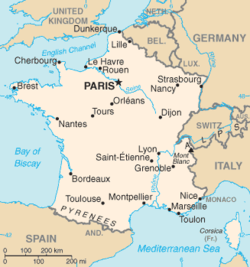This article needs to be updated.(March 2025) |

As of January 2019 [update] , there were 473 communes in France (metropolitan territory and overseas departments and regions) with population over 20,000, 280 communes with population over 30,000, 129 communes with population over 50,000 and 42 communes with population over 100,000. [1] All figures reflect the municipal population (French : population municipale), meaning people who have their usual residence in the commune, [2] excluding population counted apart. [3] The population of the matching urban unit is usually several times that of its central commune. Populations as of 2006 and 2013 are also shown. [4] [5] Communes in the overseas and sui generis collectivities are listed in a separate table below.































































